Pre-Production Review: 2013 Honda Fit EV

Despite accounting for an incredibly small percentage of new car sales in America, the EV is all the rage in California. Rather than starting from scratch and designing an all-new car from the ground up (like Nissan), Honda chose the more economical route and electrified the second-generation Honda Fit. On the surface, the recipe sounds like a slam dunk, since the Fit is one of Honda’s most attractive and most fun to drive models now on sale. To prove to the masses that Honda has what it takes to go green, they flew me out to Pasadena to sample the all-new, all-blue Fit EV.
Before we begin, we should talk about the elephant in the room: California Air Resources Board (CARB) compliance. Some years ago California decided that by 2025 15.4% of all new cars sold in California would have to meet the “Zero Emissions Vehicle” (ZEV) standard. Like any government program, the loopholes, credits and credit trading allowed in the convoluted legislation allow OEMs to sell only a small number of the “required” EVs over the next decade. Strangely the legislation doesn’t require that the vehicle be actually “sold” to the consumer either. Enter the lease-only 2013 Honda Fit EV.
Because the Fit EV was designed to be an incredibly low volume vehicle (only 1,100 will be made for the 2013 and 2014 model years combined), you can get your electric Fit in any color you want, as long as you want blue. Aside from the single shade of “EV blue”, a tweaked front grille and some EV stickers, nothing about the Fit screams “electric vehicle” the way the Leaf’s unique sheetmetal does. Some may want the world to know they are saving the planet, but I prefer Honda’s discreet approach. While the Fit EV may look just its gasoline cousin, the Fit EV has different bumpers, side sills, an increased ride height and a totally different floorpan to accommodate the batteries and improve aerodynamics.
Say what you will about the logic and politics involved with making a “compliance” EV, the 2013 Fit EV has one of Honda’s best economy car interiors. The EV’s interior is dominated by various shades of light beige plastic, a soft leather steering wheel and comfortable fabrics. Compared to the 2012 Civic, the interior is luxurious. Pitted against the gasoline Fit, the interior has been tweaked enough that Honda isn’t kidding when they say the Fit EV is the “perfect Fit.” To help conserve power, a single-zine climate control system and heated seats have been adapted to the Fit in addition to the usual bevy of EV-specific gauges. While this may seem counter-intuitive, climate control allows more efficient control over fan speed and A/C compressor usage while heated seats make the cabin feel warmer than it really is on cold days. All Fit EVs come with Honda’s usual touch-screen navigation system with EV-specific software to find charging stations and graphically display your battery range. We were not able to test the feature during our time with the Fit EV, but all models will be equipped with their new voice command system á la Ford’s SYNC.
In addition to being 14mm higher than the gasoline Fit, the addition of the battery pack required changes to the shape of the Fit’s body. This in turn means the rear seats are unique to the Fit EV riding 1.4 inches higher, 3.3 inches further back and reclined just over 4 degrees more than the regular gasoline Fit. While the extra legroom is welcome and the headroom is still sufficient for all but the tallest passengers, I found the seat back angle to be uncomfortably reclined. Fortunately the front seats remain excellent, providing decent bolstering and above average lumbar support. If you are a shorter driver, be sure to check out the seating position before you lease, as the driver’s seat is not adjustable for height.
Since Honda’s press event was boiled down to a 4 hour event, our time behind the wheel was limited to a collective 3 hours and some 80 miles. While the added weight of the battery pack and the low rolling resistance tires limit grip compared to the gasoline Fit, the battery positioning means the center of gravity is very low. The low-mounted mass and a unique independent rear suspension make the Fit EV more fun on the twisties than I expected. Honda had a collection of 2012 Nissan Leafs on hand for comparison and the back-to-back is less than shocking: the Fit handles well and the Leaf handles like a large, heavy hatchback on skinny low-rolling resistance tires. Much like the Leaf, the Fit EV’s top speed is limited by the combination of the redline on the motor and the single-speed transaxle.
The Fit EV shares its 92kW (123HP) electric motor with the Honda FCX Clarity hydrogen fuel cell car, but the single-speed transaxle is unique to the Fit. The unique gearbox seems to indicate that although the Fit EV is destined to be rarer than a Rolls Royce, Honda is willing to invest in new EV technology. In order to extend the range, the Fit provides three driving modes: Sport, Normal and Eco. Sport provides accelerator pedal mapping and motor output similar to a regular gasoline hatchback. Normal reduces engine power to around 75kW (101HP) under all but full-throttle situations and Eco reduced power further to 47kW (64HP). While some described the Eco mode as “aggravating,” the goal of an efficient city-car style EV isn’t to jet around at top speed. According to Honda, the combination of the most efficient EV drivetrain on the market, a 6.6kWh on-board charger and an 82-mile range makes the Fit EV the best electric vehicle in its class. In reality, it’s the way the Fit EV drives that makes it the best. While the steering is as numb as anything on the market with electro-mechanical power steering, the handling is light-years ahead of the Leaf in terms of both road feel and grip. It was faster too, hitting 60 MPH a full second before the Nissan Leaf (7.91 seconds).
The eternal problem with an EV is charging time. While a car with an 82 mile range would be livable for every driving occasion as long as fill-ups took only a few minutes, charging times for EVs is rated in hours. For reasons that were never officially explained, Honda decided not to equip the Fit EV with the “CHΛdeMO” DC quick-charge connector Nissan has put their weight behind. This means that while your neighbor’s Leaf may take twice as long (7 hours) to charge on your 220V home charger, they can get an 80% charge in half an hour by visiting a quick charge station.
While I’m unsure that California’s ZEV mandate is good politics, it’s obvious we can thank CARB for the existence of the Fit EV. Yet it’s the very nature of the way the Fit EV came into being that makes it both the perfect Fit and the most frustrating. For many Americans looking for a commuter car, $389 a month for the most economical car on the market including collision insurance is a fantastic deal. The flip side of course is that only 1,100 people will get to experience the low operating costs of what may be the best EV in America.
Not a fan of our Facebook page? Too bad, if you liked us on FaceBook you’d have been able to ask the Honda engineers and minders your burning questions about the Fit EV.
Honda paid for a Southwest flight, one night’s stay in a hotel, a buffet lunch and all the electrons the Fit could consume.
Specifications as tested
0-30: 3.24 Seconds
0-60: 7.91 Seconds

More by Alex L. Dykes
Latest Car Reviews
Read moreLatest Product Reviews
Read moreRecent Comments
- Dartman https://apnews.com/article/artificial-intelligence-fighter-jets-air-force-6a1100c96a73ca9b7f41cbd6a2753fdaAutonymous/Ai is here now. The question is implementation and acceptance.
- FreedMike If Dodge were smart - and I don't think they are - they'd spend their money refreshing and reworking the Durango (which I think is entering model year 3,221), versus going down the same "stuff 'em full of motor and give 'em cool new paint options" path. That's the approach they used with the Charger and Challenger, and both those models are dead. The Durango is still a strong product in a strong market; why not keep it fresher?
- Bill Wade I was driving a new Subaru a few weeks ago on I-10 near Tucson and it suddenly decided to slam on the brakes from a tumbleweed blowing across the highway. I just about had a heart attack while it nearly threw my mom through the windshield and dumped our grocery bags all over the place. It seems like a bad idea to me, the tech isn't ready.
- FreedMike I don't get the business case for these plug-in hybrid Jeep off roaders. They're a LOT more expensive (almost fourteen grand for the four-door Wrangler) and still get lousy MPG. They're certainly quick, but the last thing the Wrangler - one of the most obtuse-handling vehicles you can buy - needs is MOOOAAAARRRR POWER. In my neck of the woods, where off-road vehicles are big, the only 4Xe models I see of the wrangler wear fleet (rental) plates. What's the point? Wrangler sales have taken a massive plunge the last few years - why doesn't Jeep focus on affordability and value versus tech that only a very small part of its' buyer base would appreciate?
- Bill Wade I think about my dealer who was clueless about uConnect updates and still can't fix station presets disappearing and the manufacturers want me to trust them and their dealers to address any self driving concerns when they can't fix a simple radio?Right.



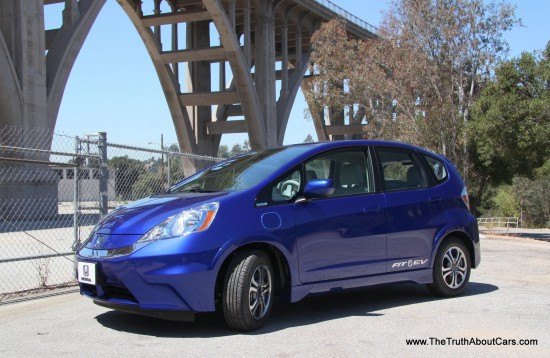









































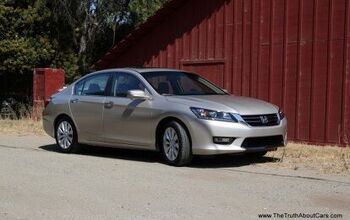
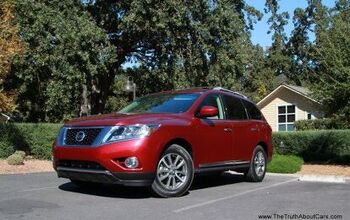
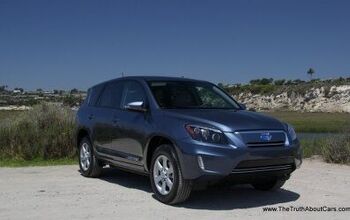
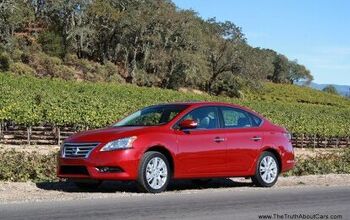










Comments
Join the conversation
Perhaps the good deal lease rate and the low production rate reflect the fact that Honda is loosing many dollars on each sale. This is a joke. Honda is doing the minimum to comply with the CA regs, nothing more.
Tesla must give their shills the 4th of July off. I can't believe they allowed a favorable article about another EV to be published without drowning it in complaints about how the author ignored that the Model S is actually superior. Incidentally, giving the shills a holiday is a rookie mistake, obviously one GM doesn't make.